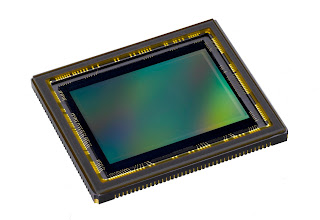 |
| High-speed photography Image credit: premiumbeat |
Ever thought what the world would look like if time went slow all around you? Well, it has become possible to get a glimpse of the fast world around in a frozen-time like scenario; thanks to the high-speed cameras. Now researchers have developed an ultra high-speed camera which can record images at about trillion frames per second, dividing a single second into trillion intervals. So how do they do it?
How conventional high-speed cameras work?
 |
| CMOS sensor Photo credit: martinmoorephotography |
Before understanding how the trillion fps (frames per second) camera works, let’s see how conventional high-speed camera works. A simple video camera records at 30fps (standard NTSC video), i.e., 30 images in a second; while a high-speed camera records at a varied range of speeds starting from few hundred fps to few billion fps. So, what are the requirements? When operating at such speeds three things primarily come into play to determine the quality of the recording. A perfect balance between these largely determines the output of the camera. These three things are sensitivity, speed and lighting for proper resolution. Generally the problem of image capturing lies in the fact that the exposure time(time for which light falls on the sensor) is very less even when recording at a few thousand fps; so, the sensitivity of the sensors have to be very high and the lighting on the object to be recorded should be enough to give a good resolution image. The important thing is the speed with which images can be recorded and transmitted through proper channels to external storage; there has to be a good synchronization.
The mechanism is quite simple and involves the counting of the number of photons by that reach the sensor. When the recording begins the camera sends signals to start and stop counting of photons to the sensor, so that the sensor starts capturing multiple images in very short time intervals; this happens at a speed determined by the fps setting that is being used, usually more than a thousand times each second. During this digital exposure time (interval between start and stop signals), each photo site in the sensor will build up a charge depending on the number of photons that reached the site which is read out of the sensor and converted into a binary number to be stored in the camera memory. A calibration frame compensates for small variations in pixels relative to each other. This whole orchestra is operated using high speed electronics and memory in a pipelined architecture. CCD and CMOS sensors are generally used in these cameras.
Working of the trillion fps camera
To achieve a staggering speed of trillion fps with workable resolutions, scientists had to make changes in the techniques and instruments used for photography. The new camera technology is called STAMP (Sequentially Timed All-optical Mapping Photography). This technology has been designed to overcome the limitations of conventional high speed cameras which are caused due to the slower processing speeds of their electrical and mechanical components. As the name suggests, STAMP overcomes this limitations by using only optical components. Keiichi Nakagawa, a research fellow at University of Tokyo, where the prototype camera is built, said “Many physical and biological phenomena are difficult to reproduce; this inspired me to work on an ultrafast camera that could take multiple frames in a single shot. Since there was no suitable technique, I decided to develop a new high-speed imaging technique in my doctoral program.”
 |
| The prototype camera Image Credit : Keiichi Nakagawa, University of Tokyo |
STAMP relies on the dispersion property of light. It splits an ultra-short pulse of light into different colored flashes that hit the image object in rapid-fire succession. Each separate color flash is then analyzed to string together a moving picture of what the object looked like over the time during which the dispersed light pulse travelled through the device. In its first iteration it could take only six frames in a shot. Currently, the team is trying to boost it to 25 frames and believes it could eventually be increased to 100 with current technology. The only shortcoming would be the fact that it operates assuming all the daughter pulses to interact with the imaged object in the same way, the camera may not be useful for imaging objects with varied optical properties over the range of wavelength used by STAMP.
Nakagawa, having observed lattice vibrations in a crystal of lithium niobate and how a laser focused onto a glass plate creates a hot, rapidly expanding plume of plasma with his team; believes that STAMP could be used to explore laser ignition of fusion, the phase transition of materials, and the dynamics of a Coulomb explosion.
Apart from this, there could be many more interesting observations and applications of the STAMP which is sure to help further research areas which were limited due to failure in observing ultra fast events. "I think it is important to note that there might be many potential applications of STAMP that I have not imagined," Nakagawa adds in this regard. So, what all mysteries this new technology will unravel, only time can tell; meanwhile, we all should patiently wait. keeping an eye open for its opportunities and achievements.
Apart from this, there could be many more interesting observations and applications of the STAMP which is sure to help further research areas which were limited due to failure in observing ultra fast events. "I think it is important to note that there might be many potential applications of STAMP that I have not imagined," Nakagawa adds in this regard. So, what all mysteries this new technology will unravel, only time can tell; meanwhile, we all should patiently wait. keeping an eye open for its opportunities and achievements.
No comments:
Post a Comment